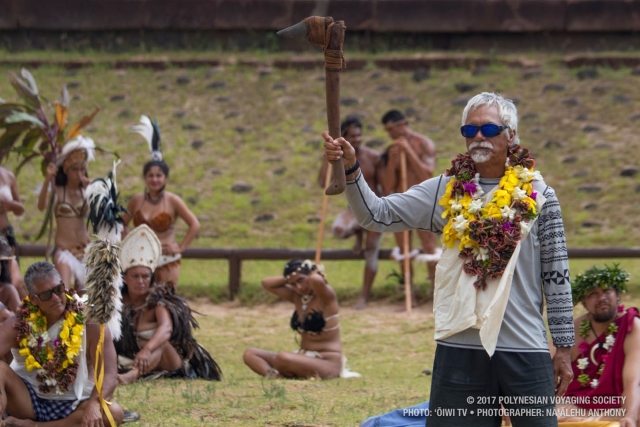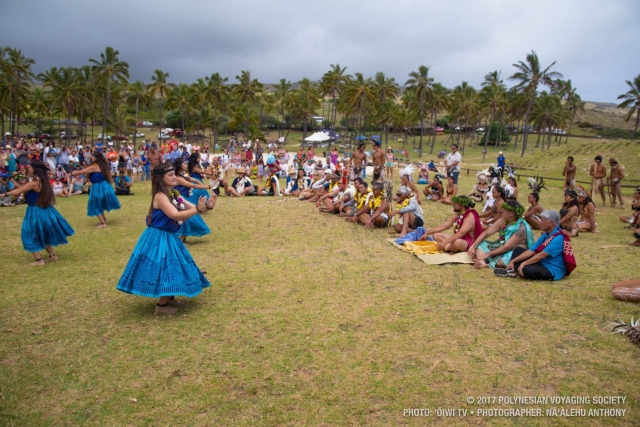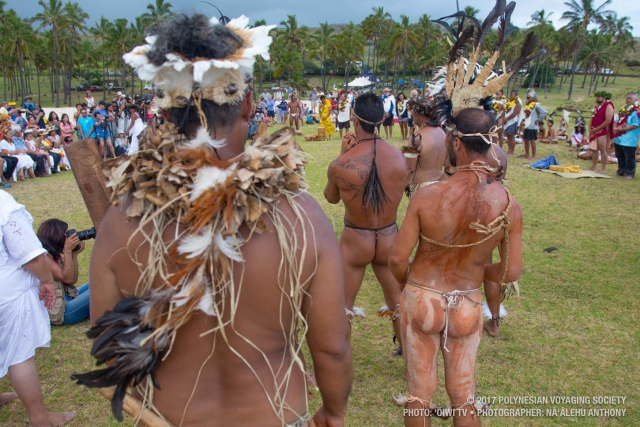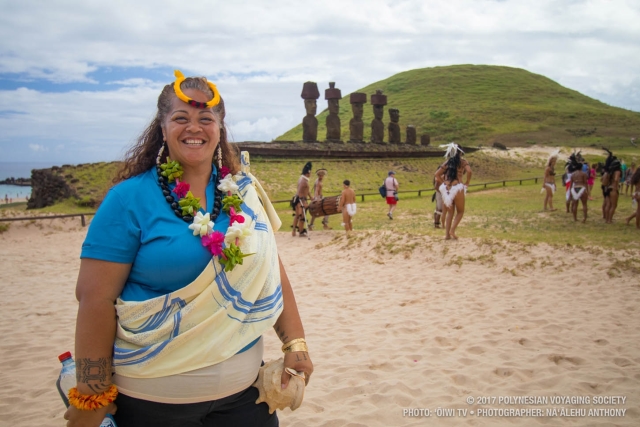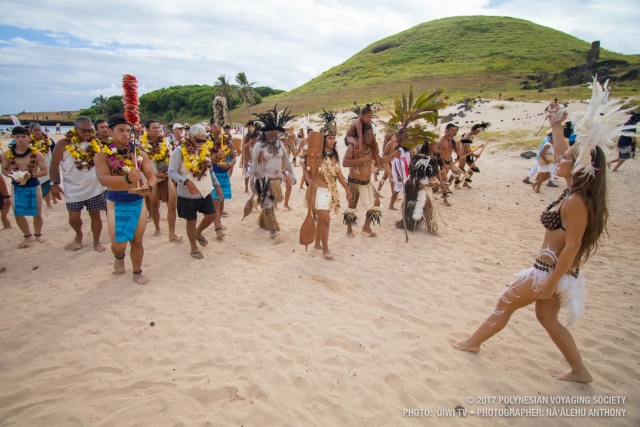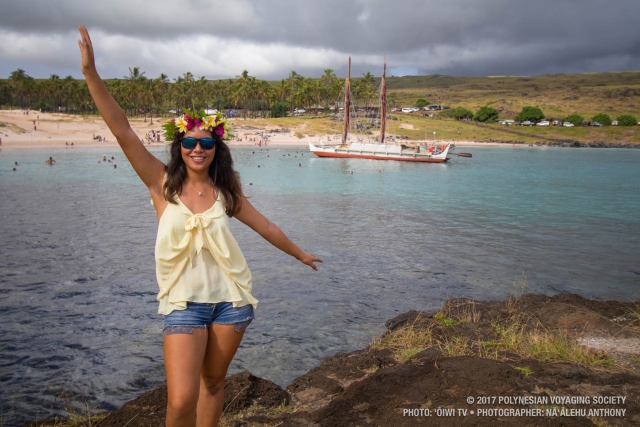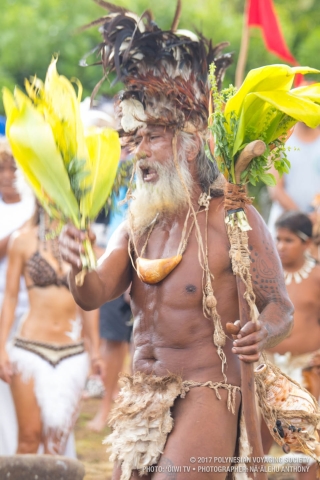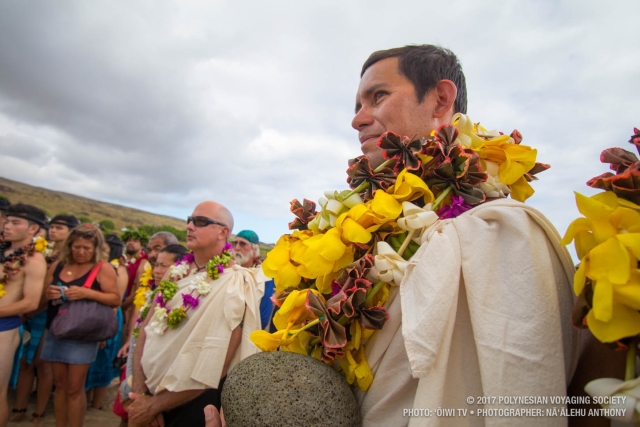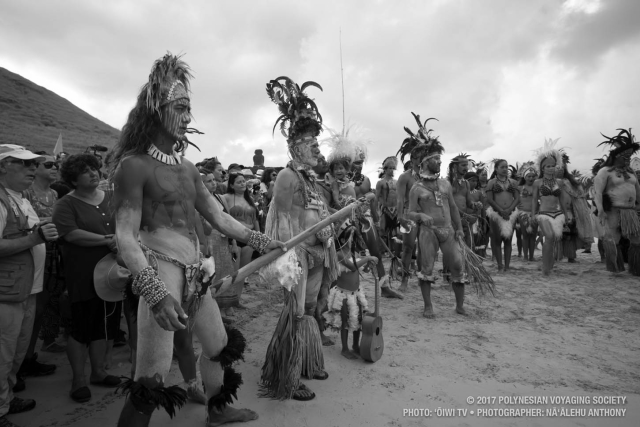Crew Blog| Austin Kino: Living Faces of Our Ancestors
- Posted on 14 Mar 2017
- In Newsletter, Photo Galleries, Teachers, Updates
 Blog by Austin Kino
Blog by Austin Kino
“When you look at the Moai be reminded that you are the living faces of your ancestors” – Julianna Rapu
As I sit in my bunk in Starboard 2 and glance across the deck of Hōkūleʻa I am eye level with two new faces to our Leg 29 crew. Hinariru and Mahorangi are the two scale model Moai that were carved as gifts for our crew and have found their way aboard our Wa’a as we travel from Rapa Nui to the island of Pitcairin.
It was only a couple of days ago that I stood staring up at the full scale Moai as our crew visited Rano Raraku, the only quarry on Rapa Nui, which is where every Moai on the island was born. Being amongst these massive creations after years of seeing images of them in school only reinforced the mystery of their existence. Standing upon the hill with some still-unfinished thirty foot tall Moai carved into the hillside beside us, our tour guide, Hangarau Ote Ariki, shares with the crew that even he still wonders how his kupuna managed to transport their masterpieces across the island.
Archaeologists believe that between the 15th and 17th century the 9 tribes of Rapa commissioned a total of 723 Moai to be built. Hangarau looks at the Moai as the faces of his ancestors who still to this day bring him and his family protection even as they travel away from Rapa Nui. He shares that it was the occupation of one tribe who lived in the village of Tongariki that neighbors the quarry to construct the Moai in exchange for food and supplies from the various tribes who at one point exhausted their resources in this effort to honor their Aliʻi. It is said that it would take an average of 30 laborers a year and a half to carve a single Moai spending over 6 months on the face alone.
On our final night in Rapa Nui after touring the island and visiting as many Moai as the day would allow our crew was invited to attend the local Rapa Nui dance performance known as Kari Kari. Watching the moves of the dancers it was easy to identify the similar dance traits of neighboring Polynesian styles. A few crew members were selected to come up on stage for the always entertaining rendition of the Tamure where the men bend their knees low and in the rhythm of the fast Tahitian style drums need to keep up with the beat moving the knees quickly together and apart while trying to mirror the hand motions of the female dancer.
After much laughter and entertainment our crew was asked to come on stage following the final number to be given a stone carved Moai to take back to Hawaiʻi as a reminder that the people of Rapa Nui are always wishing protection over their cousins in Hawaiʻi. As ocean people we understand that we are not separated by oceans but instead connected by them. This notion was evident in the final moments of Hōkūleʻa’s departure when a handful of our hosting friends stayed on board to help us the prepare food and ready Hōkūleʻa for her voyage. In a few quiet conversations between our leadership and this keen group it was evident that the seed for voyaging in Rapa Nui had been planted. Now looking at the carvings outside of my bunk I see the Moai as a reminder of the timelessness of our commitments to preserve our cultural treasures and the truth of the words spoken to us that we are all the living faces of our ancestors.
Special thanks to Hangarau Ote Ariki, the tour guide who volunteered his time to us.
Hōkūle‘a Homecoming – Save the Date
Sign up for updates and be the first to know as we continue to detail homecoming festivities during the week of Hōkūleʻa’s homecoming
in June 2017!
